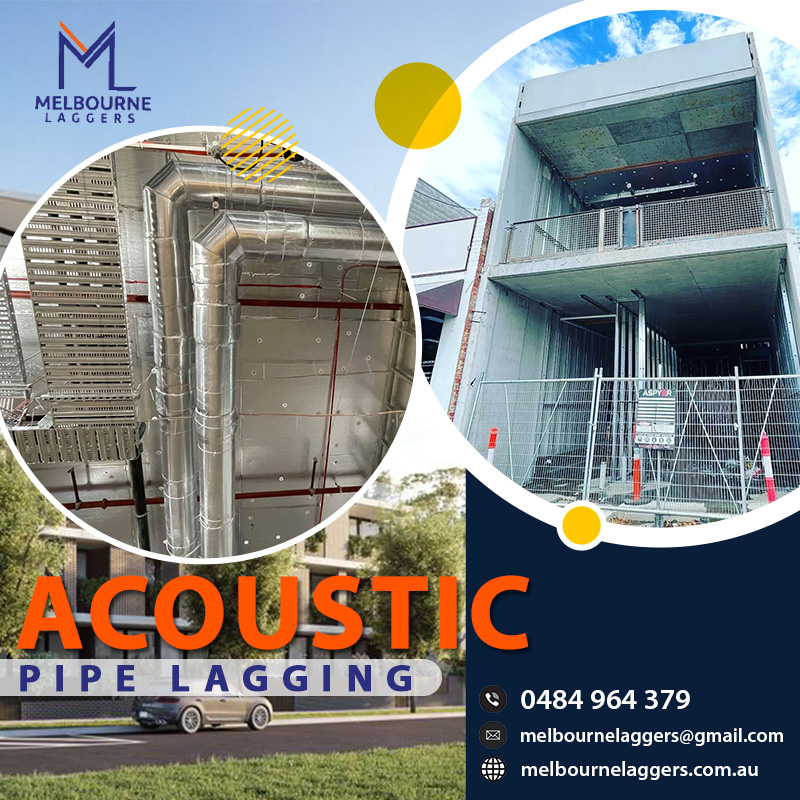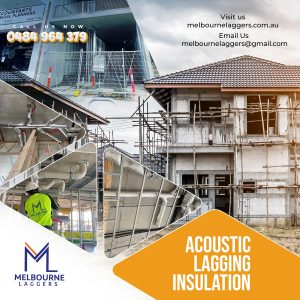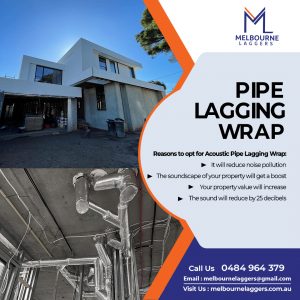Pipes are an integral part of your home which are kept hidden behind the ceilings and walls; away from the living spaces.
That said, these ceilings and walls provide inadequate soundproofing.
It is why top pipe lagging specialists operating in Melbourne recommends lagging your pipes during the installation of the pipelines or during the construction of the building, to avoid any future noisy pipe inconvenience.
However, if you do come across any accessible or exposed pipe (particularly copper and polyvinyl (PVC) piping known to produce unwanted commotion) look to soundproof it via professional help.
(Keeping This In Mind…)
Are you building a new 2-storey home?
If so, then there is one aspect which you must look into during its construction stage – the issue of noise!
As you may know; modern homes featuring lightweight constructions and open floor plans tend to be a tad noisy.
If this wasn’t enough, your plumbing pipes too can potentially lead to loud gurgling/banging/hammering sounds.
Left unchecked, the intensity of the noises increases and eventually at some point becomes insufferable.
Is There Is An Effective Solution To Such Booming Pipe Nuisances…?
Fortunately, there is a professional solution to prevent noisy pipes from disrupting the peace and serenity of your home environment.
That durable, lasting and effective solution is known as Acoustic pipe lagging.
(Digging Deeper…)
- What Does Acoustic Pipe Lagging Entail?
Acoustic lagging refers to the process of insulating a pipe that will suppress any noise generated from pipes. Acoustic Pipe Lagging is a terminology used to Insulate Sanitary and Stormwater Pipes.
Moreover, bathrooms, toilets and habiatal areas require Acoustic Pipe Lagging.
- What Is It Made Of?
Acoustic lagging denotes one impressively flexible 3-part laminate mainly made up of –
- An isolating layer
- A heavy mass layer
- An outer frame barrier
- How Does It Benefit You?
Acoustic lagging helps reduce the sound generated within the pipes due to turbulent flow caused by water and waste travelling through the pipe work to create a noise free environment for home and office owners.
- How Much Sound Does It Deters?
Acoustic lagging can reduce sound upto 25 decibels.
- When To Use Acoustic Pipe Lagging Treatments?
Pipes should be lagged during the installation of the pipelines or during the construction of the building, to avoid any inconvenience in the future, when you start living.
- Can Acoustic Pipe Lagging Be Done Post-Plastering?
While you can soundproof your pipes after the final plaster coat, it would require you to remove the coat. This could prove expensive for you.
That’s why it is recommended that you soundproof your pipes before plastering your 2-storey home during its construction stage.
- Acoustic Pipe Lagging Is Effective For Which Pipes?
Rainwater pipes, hydraulic and pneumatic pipes, wastewater pipes, sanitary and stormwater pipes.
- What Acoustic Lagging Products Are Best To Use?
Pyrotek Soundlag 4525C – A high-performance composite acoustic lagging product developed to reduce noise from hydraulic and waste pipes.
Vibralag – Vibralag is a time and cost-effective solution for treating noisy waste, supply and stormwater pipes. It has been designed to meet and exceed the acoustic requirements of the (BCA) – Building Code of Australia.
- Where To Shop For Quality Soundproofing Products?
Melbourne Laggers – your one-stop pipe lagging company near you offers you a wide range of quality soundproofing products to treat your noisy pipes during your new 2-storey home construction.
If you wish to shop for quality soundproofing products; visit https://melbournelaggers.com.au/shop/
If there is anything else you need to know about Acoustic pipe lagging treatments – then speak to us today!




